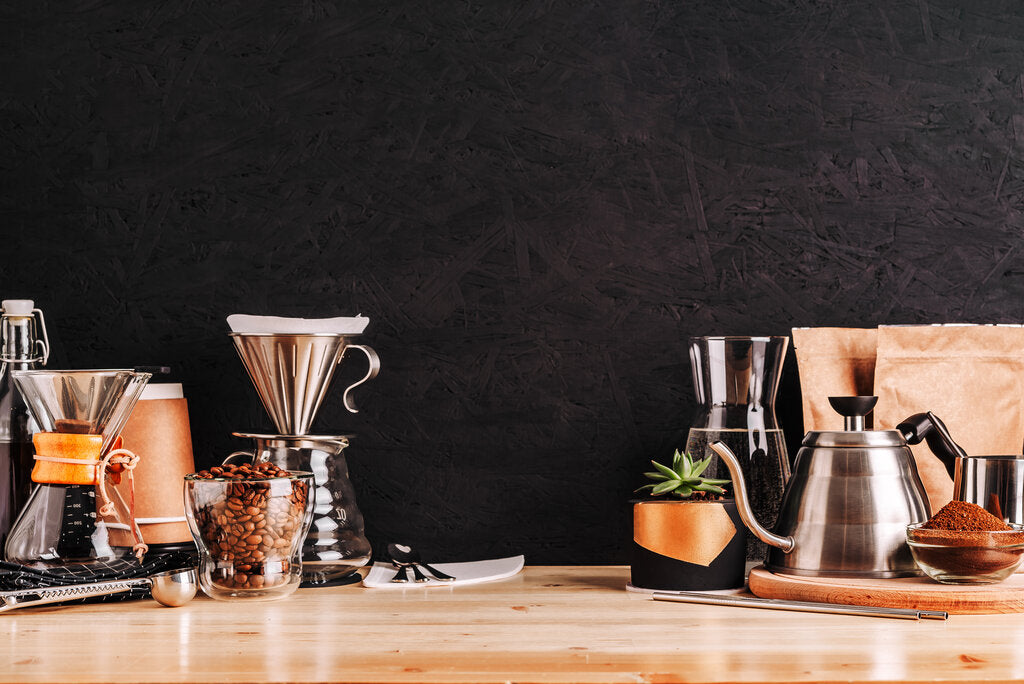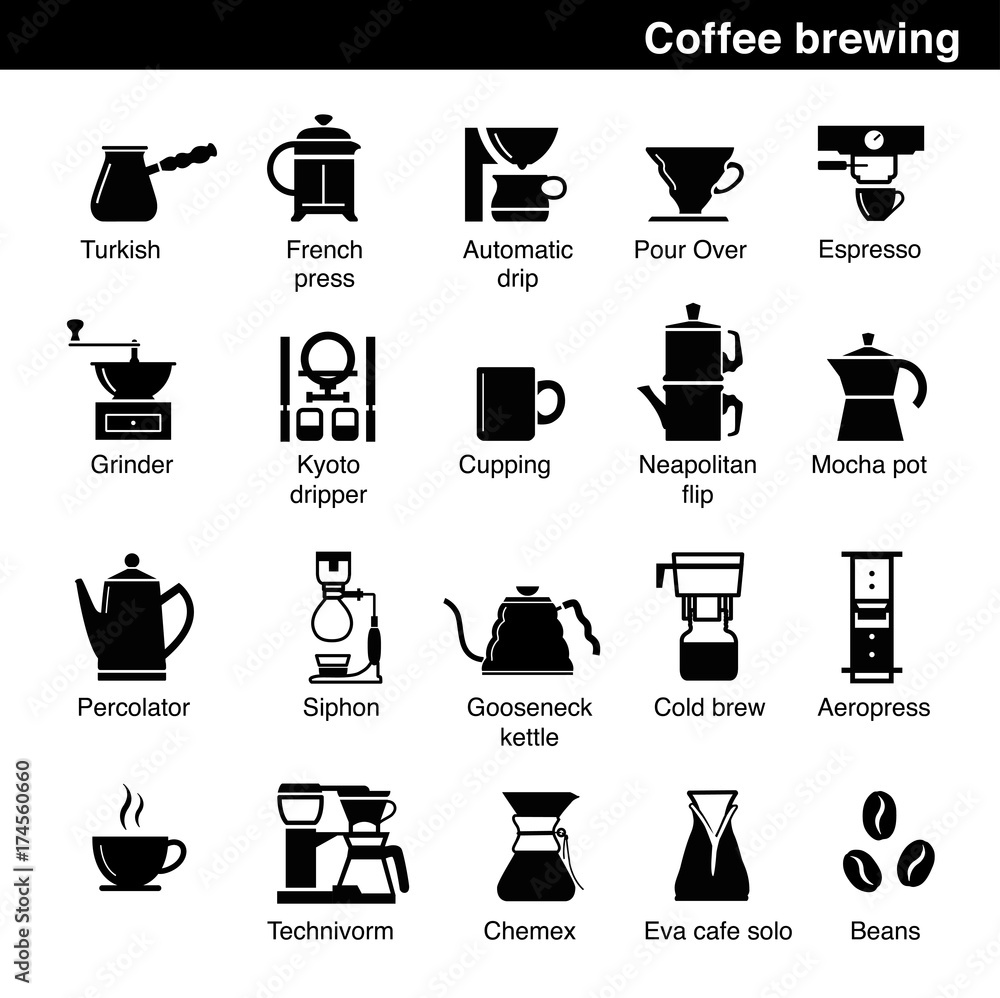Revealing the Science Behind Various Coffee Brewing Methods and Their Benefits
Wiki Article
Exploring the Art of Coffee Developing: A Comprehensive Guide to Perfecting Your Cup
The art of coffee developing is a diverse discipline that combines science with personal expression, where the selection of beans, water quality, and developing methods merge to create a polished sensory experience. Comprehending the nuances of different coffee beans, particularly the differences in between Arabica and Robusta, is important for any kind of fanatic. The selection of ideal tools and meticulous interest to developing parameters can substantially influence the final outcome. As we discover these aspects, one must consider exactly how even small adjustments can bring about extensive modifications in flavor and fragrance-- what might these changes reveal concerning your optimal cup?Understanding Coffee Beans
To genuinely appreciate the art of coffee developing, one need to first recognize the foundational element: coffee beans. These tiny seeds, commonly acquired from the Coffea plant, are essential in identifying the flavor profile, aroma, and general quality of the made drink. Coffee beans mainly fall into 2 groups: Arabica and Robusta. Arabica beans, understood for their fragile tastes and higher acidity, are typically favored by connoisseurs. On the other hand, Robusta beans have a stronger, a lot more bitter preference and higher high levels of caffeine web content, making them ideal for espresso blends.
Furthermore, the processing approach-- whether washed, all-natural, or honey-- influences the beans' final preference. Understanding these elements allows makers to select the right beans that line up with their chosen taste profile, ultimately boosting the coffee brewing experience. coffee brewing methods. This comprehension is essential for any person desiring master the craft of making the perfect mug of coffee
Brewing Approaches Explained
Lots of lovers discover that the choice of developing approach substantially impacts the final taste and scent of their coffee. Each technique harnesses different removal strategies, affecting the coffee's character and splendor.Drip brewing, among one of the most prominent methods, makes use of a device to trickle warm water through ground coffee, generating a tidy and constant cup. French press, on the other hand, submerses coffee grounds in warm water, enabling a fuller body and even more robust taste, as oils and great particles stay in the brew.
Pour-over developing supplies a careful method, where water is by hand poured over coffee premises, enabling exact control over removal time and temperature level, causing a nuanced and intense mug.
Espresso, a focused coffee made under pressure, is known for its solid flavor and luscious Click Here texture, serving as the base for numerous coffee drinks, consisting of coffees and cappucinos.
Important Devices Required
What devices is necessary for making a wonderful cup of coffee? The foundation of any successful coffee brewing process depends on top quality tools tailored to your favored method. A dependable coffee mill is critical; newly ground beans considerably enhance flavor and scent. Go with a burr grinder, which guarantees consistent particle dimension, important for optimal extraction.Next, consider your brewing tool. Alternatives vary from drip coffee makers and pour-over configurations to French presses and coffee makers. Each approach supplies distinct flavor profiles and developing techniques, so pick one that lines up with your preference choices.
An accurate scale is additionally vital, allowing you to measure coffee and water properly, which is crucial for uniformity. Furthermore, a thermostat can help keep an eye on water temperature level, as it straight influences extraction quality.
Learning Water High Quality
The top quality of water used in brewing coffee plays a substantial function in establishing the final flavor profile of the mug. Different variables add to water top quality, including mineral web content, pH degree, and total pureness. Preferably, water needs to be devoid of contaminants and pollutants, as these can negatively influence the preference of coffee.
Minerals, you can try here such as calcium and magnesium, boost the removal of flavors from the coffee premises, while maintaining a well balanced pH level-- around 6.5 to 7.5-- is crucial for optimal extraction. Water that is too soft might lead to under-extraction, leading to sour or weak tastes, while extremely tough water can produce a bitter or harsh mug.
For the very best outcomes, filtered water is advised, as it decreases the visibility of chlorine and various other undesirable substances typically discovered in faucet water. Furthermore, take into consideration making use of water with a Complete Dissolved Solids (TDS) degree in between 150-200 ppm, which is generally ideal for coffee developing. By grasping water quality, you can lay a solid foundation for accomplishing a consistently exceptional cup of coffee, permitting the unique features of your chosen beans to radiate through.

Tips for Flavor Enhancement
Enhancing the taste of your coffee can significantly elevate your brewing experience and highlight the one-of-a-kind subtleties of your selected beans. To attain this, consider numerous essential factors that affect taste.To start with, the grind size plays a critical function. A finer work raises extraction, causing bolder tastes, while a coarser work yields a milder cup. coffee brewing methods. Adjust your grind according to your brewing technique to attain ideal outcomes
Second of all, experiment with mixture time. Over-extraction can cause anger, while under-extraction lead to a sour preference. Go for a mixture time that stabilizes these extremes, usually in between 2 to 4 mins, depending upon your technique.
Furthermore, temperature level is a crucial component. Developing with water that is as well hot can swelter the coffee, while water that is too trendy might stop working to extract sufficient flavor. The suitable temperature level variety is 195 ° F to 205 ° F(90 ° C to 96 ° C)
Verdict) )))) In verdict, the art of coffee developing is a diverse technique that needs a deep understanding of various components, consisting of bean choice, brewing methods, and water quality. Mastery of essential devices and attention to detail in grind dimension, make time, and temperature level are critical for achieving ideal extraction. By integrating these parts, coffee enthusiasts can elevate their brewing strategies, leading to a cup that not just satisfies personal preferences yet additionally showcases the rich intricacy of coffee flavors.
The art of coffee developing is a multifaceted discipline that merges science with personal expression, where the option of beans, water high quality, and brewing methods merge to produce a polished sensory experience.To really appreciate the art of coffee developing, one have to first recognize the foundational aspect: coffee beans. Brewing with water that is too hot can blister the coffee, while water that is as well cool might stop working to remove adequate flavor. In conclusion, the art of coffee brewing is a multifaceted method that needs a deep understanding of numerous aspects, including bean choice, brewing approaches, and water high quality. By integrating these components, coffee fanatics can boost their brewing strategies, resulting in a cup that not only pleases personal preferences yet go to this site additionally showcases the rich complexity of coffee flavors.Report this wiki page